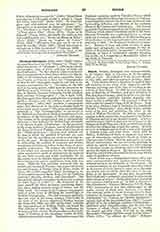

Nicole, PIERRE, theologian and controversialist, b. October 19, 1625, at Chartres; d. November 16, 1695, at Paris. He studied at Paris, became Master of Arts, 1644, and followed courses in theology, 1645-46. Under Sainte-Beuve’s direction he applied himself earnestly to the study of St. Augustine and St. Thomas, devoting part of his time to teaching in the schools of Port-Royal. In 1649 he received the degree of Bachelor of Theology, and then withdrew to Port-Royal des Champs, where he fell in with the Jansenistic leaders, especially Antoine Arnauld, who found in him a willing ally. He returned to Paris in 1654 under the assumed name of M. de Rosny. Four years later, during a tour in Germany, he translated Pascal’s “Provinciales” into classic Latin, adding notes of his own and publishing the whole as the work of William Wendrock. In 1676 he sought admission to Holy orders, but was refused by the Bishop of Chartres and never got beyond tonsure. A letter, which he wrote (1677) to Innocent XI in favor of the Bishops of Saint-Pons and Arras, involved him in difficulties that obliged him to quit the capital. In 1679 he went to Belgium and lived for a time with Arnauld in Brussels, Liege, and other cities. About 1683 de Harlay, Archbishop of Paris, to whom he had sent a sort of retractation, authorized Nicole to return to Chartres, then to Paris. Here he took part in two celebrated controversies, the one involving Quietism in which he upheld Bossuet’s views, the other relating to monastic studies in which he sided with Mabillon against the Abbe de Rancey. His last years were saddened by painful infirmities and his death came after a series of apoplectic attacks.
Pierre Nicole was a distinguished writer and a vigorous controversialist and, together with Pascal, contributed much to the formation of French prose. As a controversialist, he too frequently placed his talent at the service of a sect; however, many are of the opinion that he did not wholly share the errors of the majority of the Jansenists. At any rate, we generally find in him only a mitigated expression of these errors clothed in great reserve. On the other hand, he started the resistance fund known as “la bolte a Perrette”. (See Cornelius Jansen.) Niceron (Memoires, XXIX, Paris, 1783) enumerates no less than eighty-eight of his works, several of which were, however, very short. The principal works of Nicole relating either to Protestantism or Jansenism are: “Les imaginaires et les visionnaires” or “Lettres sur l’heresie imaginaire”, namely, that of the Jansenists (Liege, 1667); “La perpetuite de la foi catholique touchant l’Eucharistie”, published under Arnauld‘s name, but the first three volumes of which (Paris, 1669-76) are by Nicole, the fourth and fifth (Paris, 1711-13) by the Abbe Renaudot; “Prejuges legitimes contre les Calvinistes” (Paris, 1671); “La defense de l’Eglise” (Cologne, 1689), being a reply to the “Defense de la Reformation” written by the minister, Claude, against the “Prejuges legitimes”; “Essais de morale” (Paris, 1671-78); “Les pretendus Reformes convaincus de schisme” (Paris, 1684); “De l’unite de l’Eglise” or “Refutation du nouveau systeme de M. Jurieu” (Paris, 1687), a condensed and decisive criticism of the theory of the “fundamental articles”; “Refutation des principales erreurs des Quietistes” (Paris, 1695); “Instructions theologiques et morales sur les sacrements” (Paris, 1706), “sur le Symbole” (Paris, 1706), “sur l’Oraison dominicale, la Salutation angelique, la Sainte Messe et les autres prieres de l’Eglise” (Paris, 1706), “sur le premier commandement du Decalogue” (Paris, 1709); “Traite de la grace generale” (Paris, 1715), containing all that Nicole had written at different times on grace; “Traite de l’usure” (Paris, 1720) .
J. FORGET

